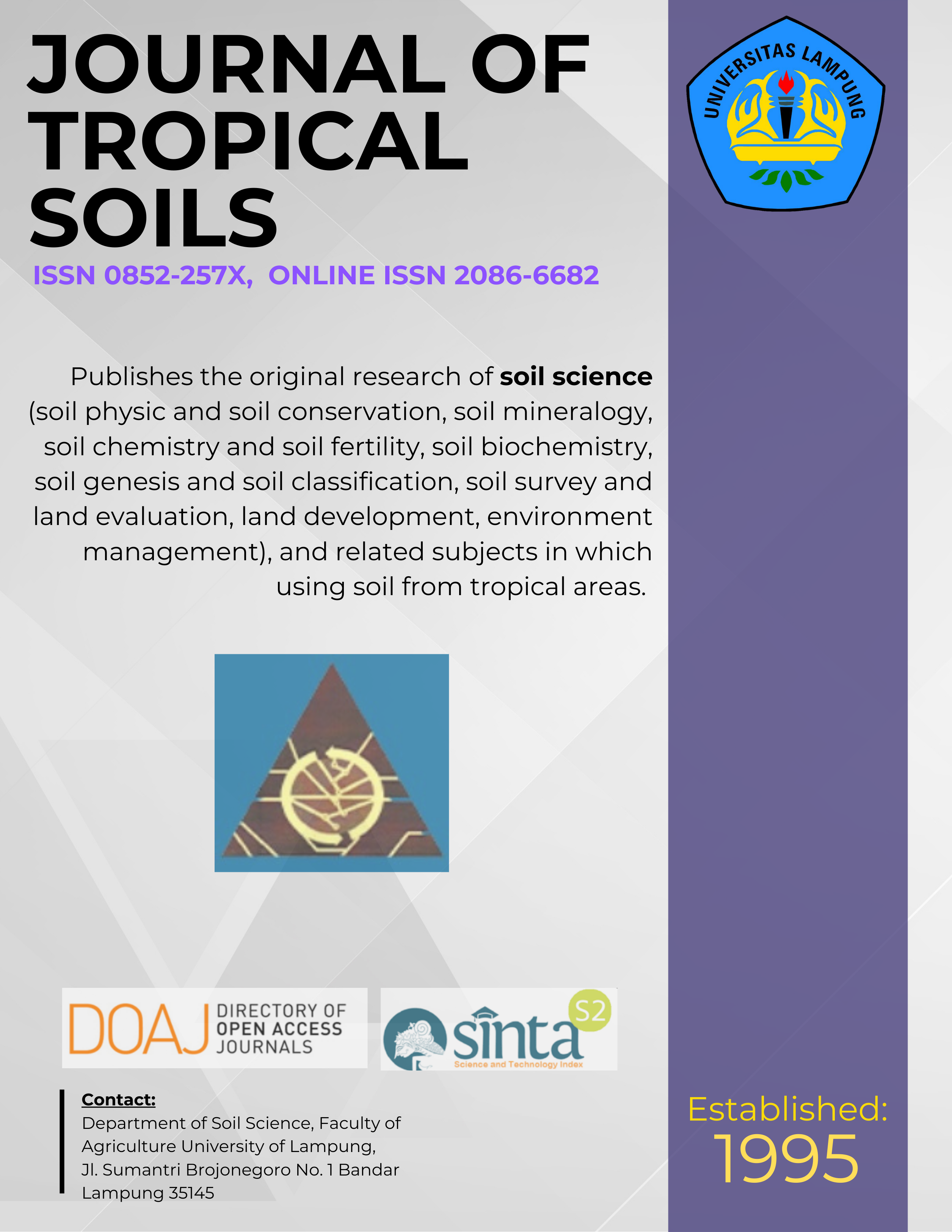Soil Bacterial Diversity and Productivity of Coffee - Shade Tree Agro-ecosystems
Main Article Content
Abstract
Coffee productions should have environmental value such as providing high soil microbial diversity while producing high yield. To examine that purposes, two experimental plots were constucted at benchmark site of Conservation and Sustainable Management of Below-Ground Biodiversity (CSM-BGBD), in Sumberjaya Subdistrict, West Lampung, Indonesia, during 2007-2010. Types of coffee agro-ecosystem to be examined were Coffea canephora with shade trees of Gliricidia sepium, Erythrina sububrams, Michelia champaca, and no shade. Two plots were constructed at 5-years-coffee and 15-years-coffee. Diversity of soil bacteria was determined based on DNA finger printing of total soil bacteria using Ribosomal Intergenic Spacer Analysis (RISA) method. The results showed that: (1) For mature coffee (15 years old), shade-grown coffee agro-ecosystems had higher soil bacterial diversity than those of no shade coffee agro-ecosystem, (2) Shaded coffee agro-ecosystems were able to conserve soil bacterial diversity better than no-shade coffee agro-ecosystem. Soil organic C and total litter biomass had positive effect on soil bacterial diversity, (3) Types of agro-ecosystem significantly affect the bean yield of 15 years coffee. Coffee agro-ecosystems shaded by legume trees had higher yield than those of non-legume shade and no shade coffee agro-ecosystem, (4) Shannon-Weaver indices of soil bacterial diversity together with weed biomass and N content of coffee leaf had positive effect on coffee bean yield.
Downloads
Download data is not yet available.
Article Details
Issue
Section
Articles
License for Authors
Authors who publish with this journal agree to the following terms:
- Authors retain copyright and grant the journal right of first publication with the work simultaneously licensed under a Creative Commons Attribution License that allows others to share the work with an acknowledgement of the work's authorship and initial publication in this journal.
- Authors are able to enter into separate, additional contractual arrangements for the non-exclusive distribution of the journal's published version of the work (e.g., post it to an institutional repository or publish it in a book), with an acknowledgement of its initial publication in this journal.
- Authors are permitted and encouraged to post their work online (e.g., in institutional repositories or on their website) prior to and during the submission process, as it can lead to productive exchanges, as well as earlier and greater citation of published work (See The Effect of Open Access).
License for Regular Users
Other regular users who want to cite, distribute, remix, tweak, and build upon author’s works, even for commercial purposes, should acknowledge the work’s authorship and initial publication in this journal, licensed under a Creative Commons Attribution License.
How to Cite
Soil Bacterial Diversity and Productivity of Coffee - Shade Tree Agro-ecosystems. (2012). JOURNAL OF TROPICAL SOILS, 17(2), 181-187. https://doi.org/10.5400/jts.2012.v17i2.181-187

